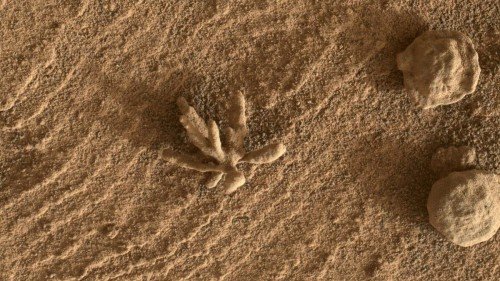The plants of Mars, Curiosity's latest gift. But for scientists they are pillars of rock


Another unexpected gift from the Curiosity rover, now almost in its tenth year of stay on the surface of Mars. A photo shows strange "branches" emerging from the rocks of Gale Crater, the large crater, once invaded by water at the center of which stands the immense mass of Mount Sharp. The presence of plants, although apparently withered, would denounce the existence, not exactly remote, of life. However, scientists hold back, and here is the theory that would explain the presence of these "deadwood". In fact, these are not branches but “columns” probably created by substances similar to cement that once filled ancient cracks in the rocky substrate. As the softer rock was consumed, eroded by water and then by the wind, the meandering streams of compact material remained standing. According to experts, this would be proved by the fact that on Earth there are similar formations which, depending on the place where they arise, are called differently.

"Fairy chimneys", "earth pyramids" or "Hoodoo", are precisely very particular rocky reliefs that can be found in various parts of the globe, even in Italy.


I propose you the images of the three species of rock formations and I invite you to compare them with the Martian ones. In my opinion there is no similarity. The most striking one is with coral (see photo) and, being the bottom of an ocean, its presence would be consistent. And, I venture to say, not a coral plant of billions of years ago but much closer to our time, so much so that the frequent Martian windstorms and cosmic rays have not had time to damage or even pulverize it. The same goes for the strange one-cent-sized flower discovered by the Mars Hand Lens Imager (MAHLI), an instrument installed on Curiosity's robotic arm used to collect microscopic images and details of rocks. Again the resemblance to a coral plant is evident. Two small discoidal rocks have been observed near the "flower"; according to experts, too, shaped billions of years ago by the passage of water. This time I am not telling you my opinion on these two pebbles and I am silent, so as not to appear a "Martian extremist".

Therefore, the chapter "Life on Mars" reopens with new episodes that enrich the already large collection of finds with further clues. In my opinion, the efforts of the experts to remove any suspicion of extraterrestrial life are deserving. However, the traces of their fingernails begin to show through on the mirrors...